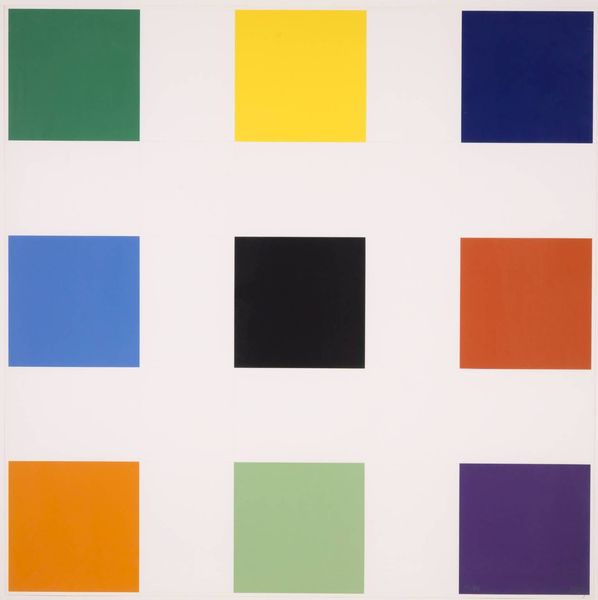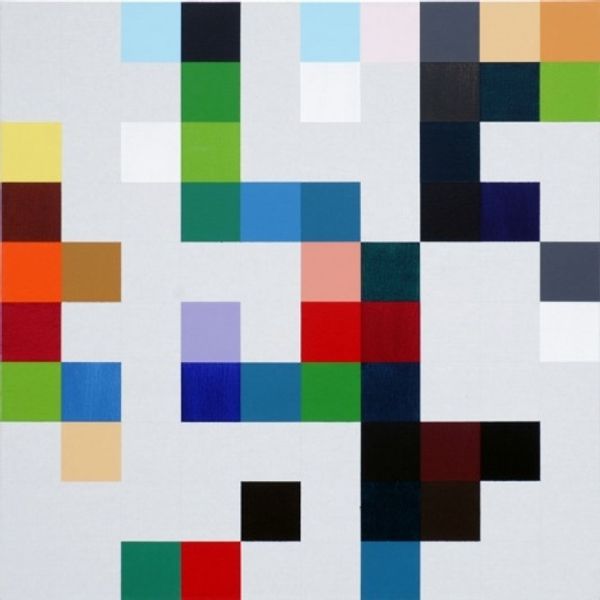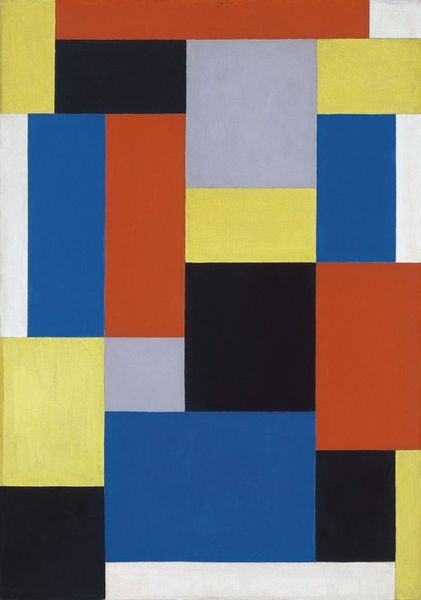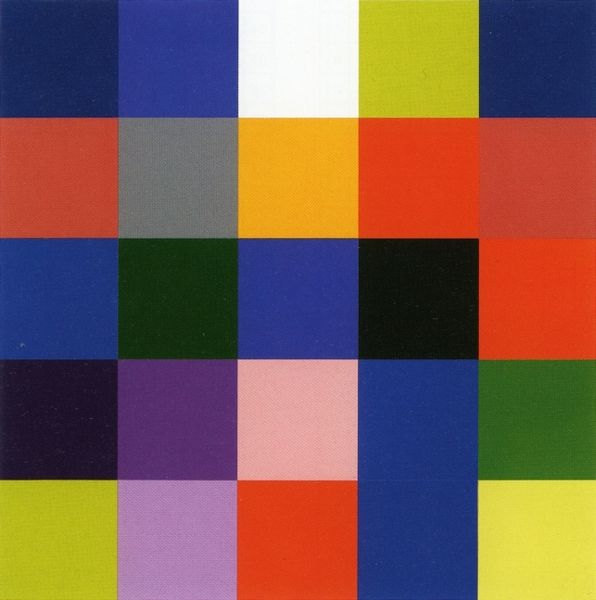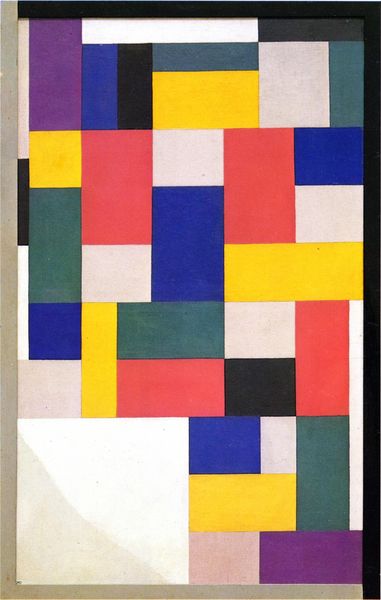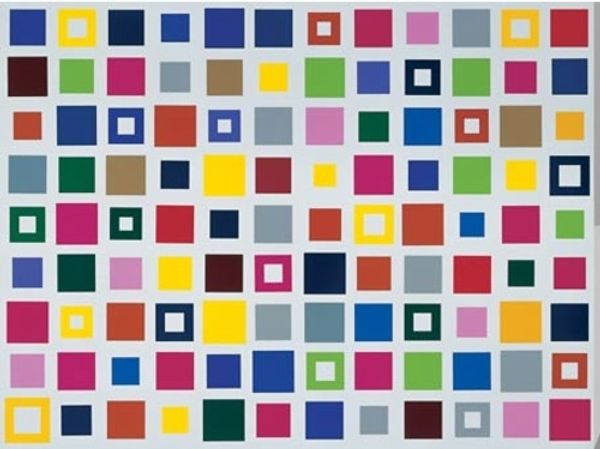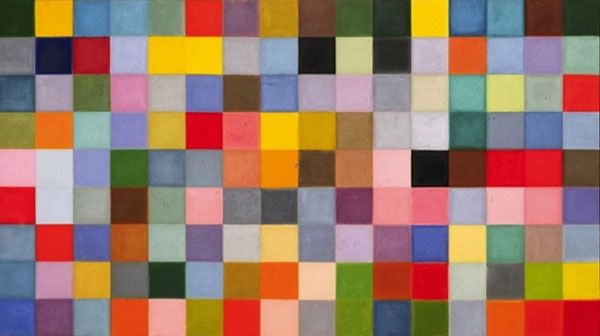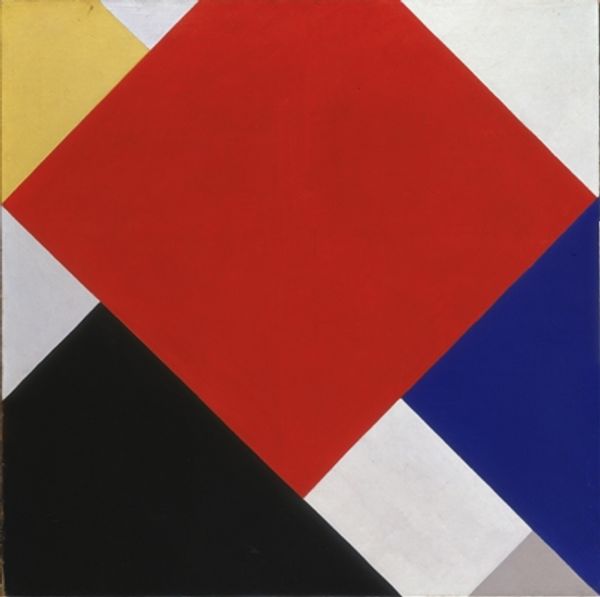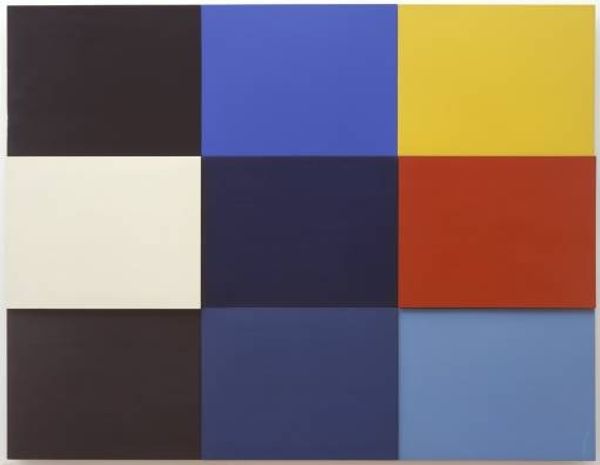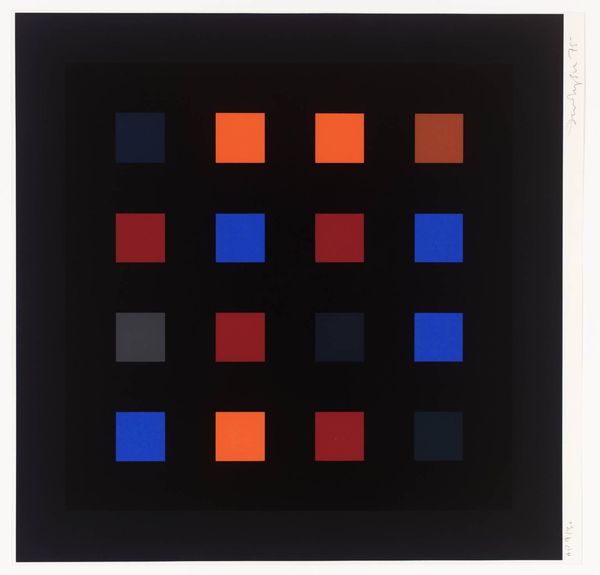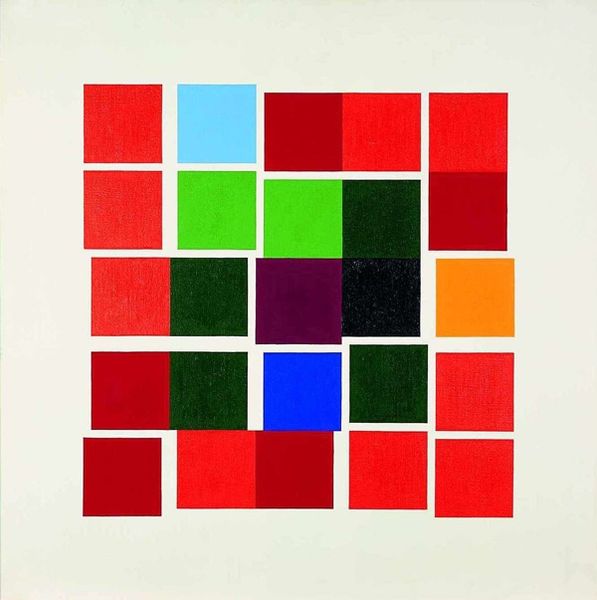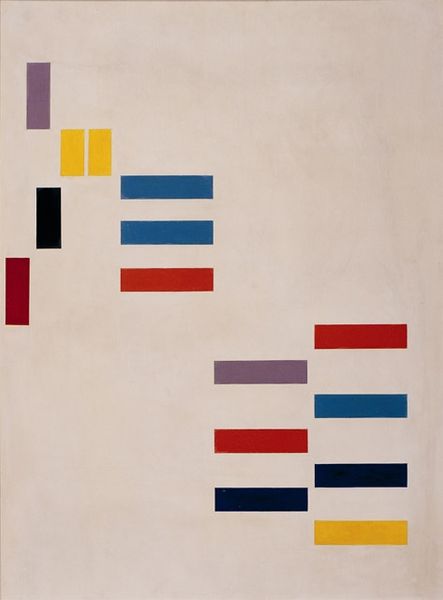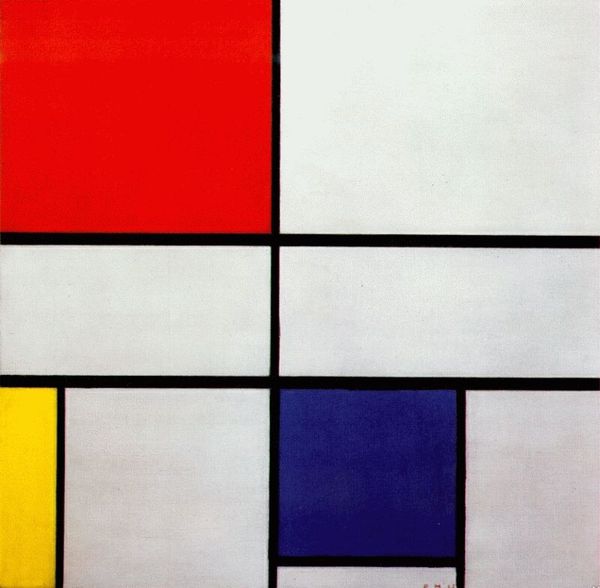
Colors for a Large Wall 1951
0:00
0:00
ellsworthkelly
Museum of Modern Art (MoMA), New York City, NY, US
painting, acrylic-paint
#
painting
#
pattern
#
colour-field-painting
#
acrylic-paint
#
geometric pattern
#
geometric
#
geometric-abstraction
#
square
#
abstraction
#
line
#
modernism
#
hard-edge-painting
Copyright: (c) Ellsworth Kelly, all rights reserved
Curator: Alright, let’s talk about Ellsworth Kelly’s “Colors for a Large Wall,” painted in 1951. Editor: This is a very large acrylic on canvas that strikes me with the interplay of geometric forms. What strikes you about it? Curator: What immediately grabs me is the context in which it was made. Post-war America was wrestling with issues of identity and societal norms. Looking at this grid, I am interested in thinking of the rigid social structures of the 1950s in tension with the emerging Civil Rights movement. Kelly, through his arrangement, offers us both order and potential for disruption. Where do you see those disruptions happening? Editor: It’s true, there’s something unsettling about the irregular pattern of the squares. Perhaps it reflects a growing restlessness towards traditional social frameworks? What about the influence of other artistic movements on Kelly's work? Curator: Absolutely! Think about the legacy of the Bauhaus, with its emphasis on geometric abstraction and functional design. But Kelly pushes beyond that. Instead, it allows the grid, a symbol of rationality and order, to be subverted by chance and intuition. So what happens when we bring feminist theory into the discussion, especially looking at how gender roles were so rigidly defined during this period? Editor: Hmmm...could the deviation in the pattern be read as an attempt to dismantle established structures? Curator: Precisely! Kelly prompts us to question what is considered "normal" or "acceptable," and how these definitions are inherently tied to power dynamics. What began as pure formalism slowly deconstructs into an argument for freedom. Editor: This perspective adds so much depth! I now appreciate this painting not only as a visually striking piece, but as a powerful statement against conformity and a subtle call for social change. Thank you for the insight.
Comments
No comments
Be the first to comment and join the conversation on the ultimate creative platform.
